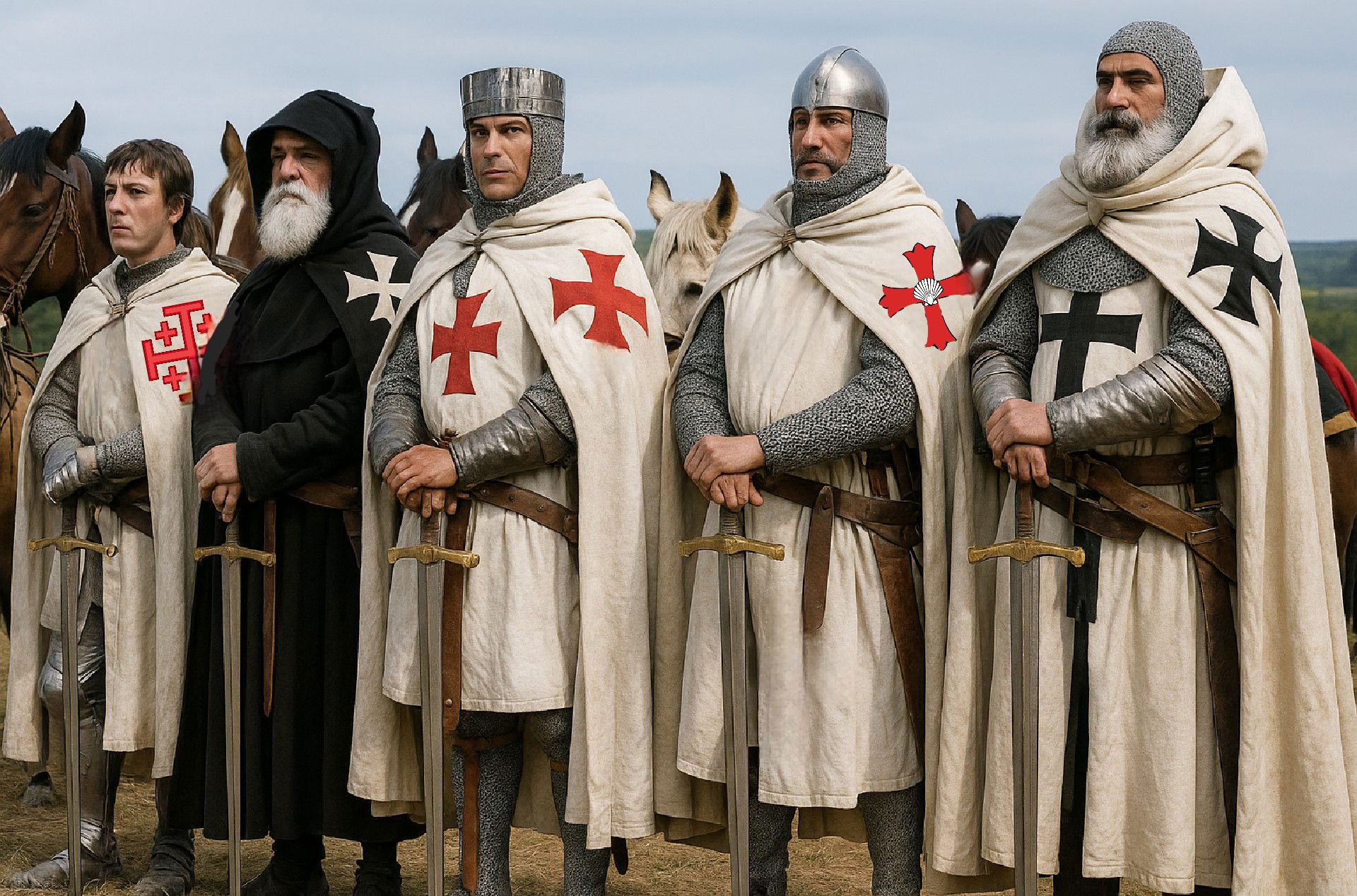The Rise of the Medieval Knights
The medieval knight is an exclusively European creation, born from Christian traditions and the unique social conditions of the Middle Ages. When discussing medieval knights, it is essential to distinguish between the religious military orders of the Crusades and the “ordinary” knights who served local lords throughout feudal Europe.
The Church and the Birth of the Chivalric Code
In a time marked by endemic violence and lawlessness, armed men often acted without restraint. To curb this chaos, the medieval Church intervened, imposing strict moral rules on the use of force. It forbade violence against the defenceless, threatening excommunication for those who broke these divine laws. Through these actions, the Church not only protected the innocent but also redirected the aggression of Europe’s nobles, giving rise to the moral and spiritual foundation of chivalry, the defining code of medieval knights.
Thus emerged the chivalric ethic, rooted in religious duty, service to the Church, and the defense of the poor and innocent. Pope Gregory VII established a new model of holy warrior - the miles Sancti Petri (soldier of St. Peter) - transforming the older idea of miles Christi (soldier of Christ), which had referred mainly to monks, priests, and martyrs. The new concept sought to sanctify those who served Christianity with sword in hand, particularly during campaigns against the Arabs in the Iberian Peninsula and the pagan tribes of the Baltic region.
The Training and Education of a Medieval Knight
The education of a medieval knight began early. Boys of noble birth were sent to a lord’s court at around seven years old to serve as pages, where they learned good manners, courtesy, basic literacy, the liberal arts, and horsemanship. At fourteen, they became squires, training directly under a knight in the art of war, hunting, and weapon handling.
By the age of 18 to 21, if they had proven themselves brave and loyal, they were knighted, often before or after battle, depending on their merit.
The Knighting Ceremony: A Sacred Transformation
By the 12th and 13th centuries - the height of the knightly institution - the knighting ceremony took on an almost sacramental character. The initiate’s hair and beard were cut, and he was dressed in symbolic garments:
- White tunic – purity
- Red cloak – readiness to shed blood for Christ
- White belt – virtue and chastity
- Golden spurs – eagerness to fulfil divine duty
- Brown stockings – connection to the earth
- Black footwear – mortality and humility
The ceremony often ended with the alapa militaris — a ritual blow to the neck or shoulder — symbolizing the last strike the knight would receive without striking back, and his awakening to a new, holy life.
Some spent the night in prayer and vigil, their sword resting upon the altar, before being fully accepted as a knight of Christendom.
Weapons and Symbols of the Medieval Knights
Every medieval knight was defined by his arms and horse. His equipment included:
- A lance for mounted combat
- A double-edged sword for close battle
- A shield (round, oval, teardrop, or triangular) bearing his coat of arms
- A dagger for emergencies
The horse was the true emblem of knighthood. Without it, a knight would be a mere infantryman. Horses were often covered with a valtrap — a decorative cloth embroidered with the knight’s heraldic insignia, ensuring recognition in the chaos of battle or tournament.
The Rise of the Religious Military Orders
After the First Crusade (1096–1099), the concept of religious military orders emerged in the Holy Land. These organizations combined monastic discipline with martial duty, forming the spiritual elite of medieval warfare. The most famous were:
- The Knights Templar
- The Knights Hospitaller (also known as the Knights of St. John, of Rhodes, or of Malta)
- The Teutonic Knights
In the Iberian Peninsula, similar orders such as Calatrava, Alcántara, and Santiago arose to combat the Moors. In the Baltic region, the Livonian Order fought pagan tribes.
Members of these military orders took vows of chastity, obedience, poverty, and above all, combat in defense of the faith. They were known collectively as the militia Christi — the Army of Christ.
Hierarchy and Purpose of the Military Orders
Each order maintained a strict hierarchy led by a Grand Master, supported by knights, sergeants (servientes), and clerics. Their motivations varied — from genuine religious devotion and desire for penance to seeking a new life or military career. Unlike ordinary crusaders, whose vows lasted only for the duration of a campaign, members of the military orders served for life, dedicating themselves entirely to God and the protection of Christian lands.
The medieval knight stood as both a warrior and a moral symbol — a fusion of Christian piety, martial skill, and feudal duty. Whether serving a lord on European soil or defending pilgrims in the Holy Land, the knight’s code of honor, discipline, and sacrifice became one of the defining ideals of medieval Europe and a cornerstone of Western civilization.
